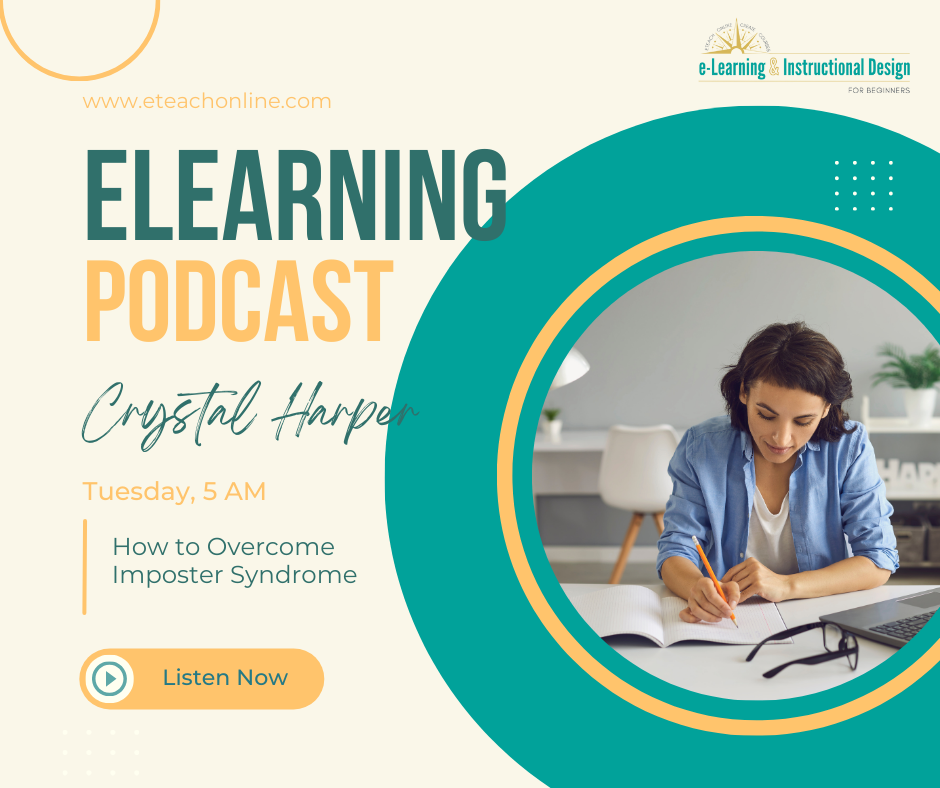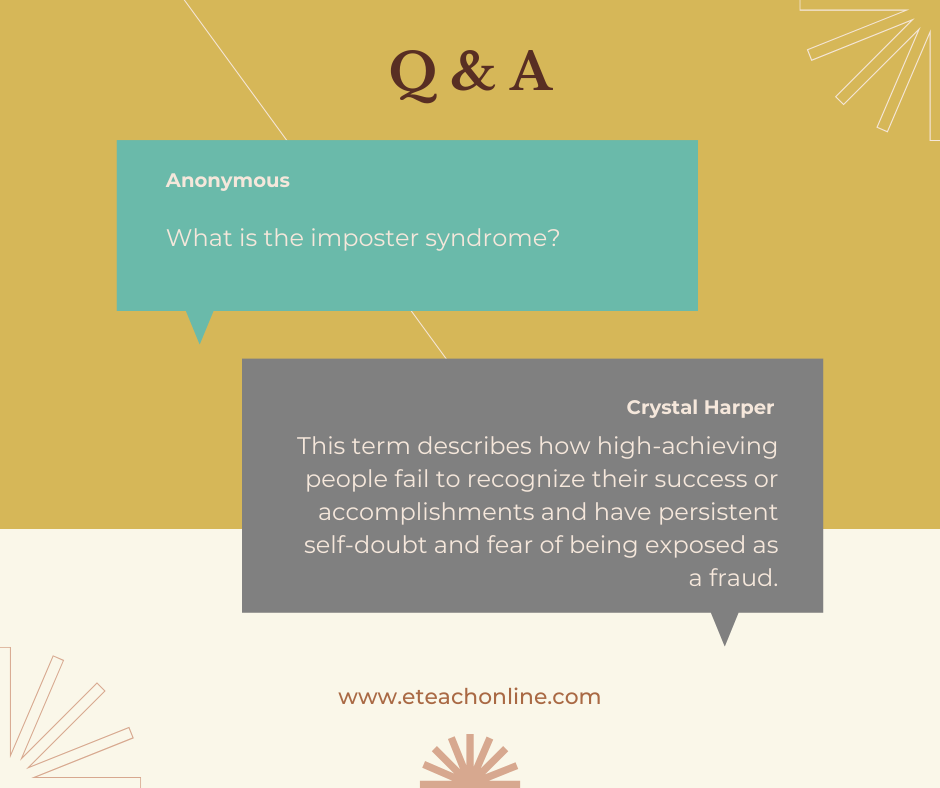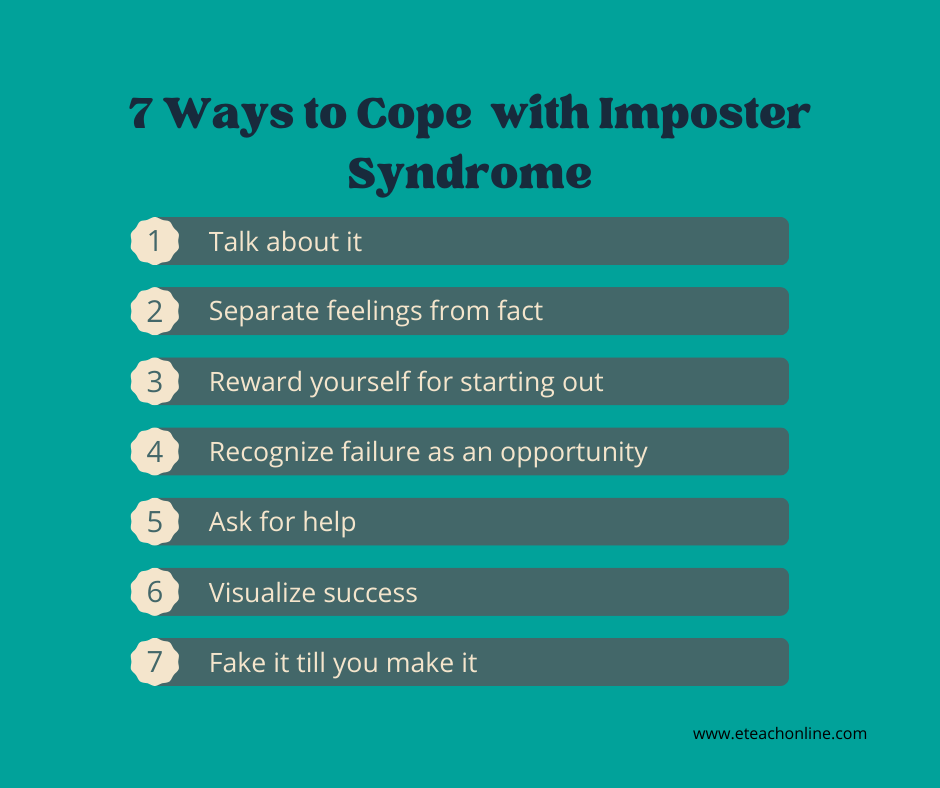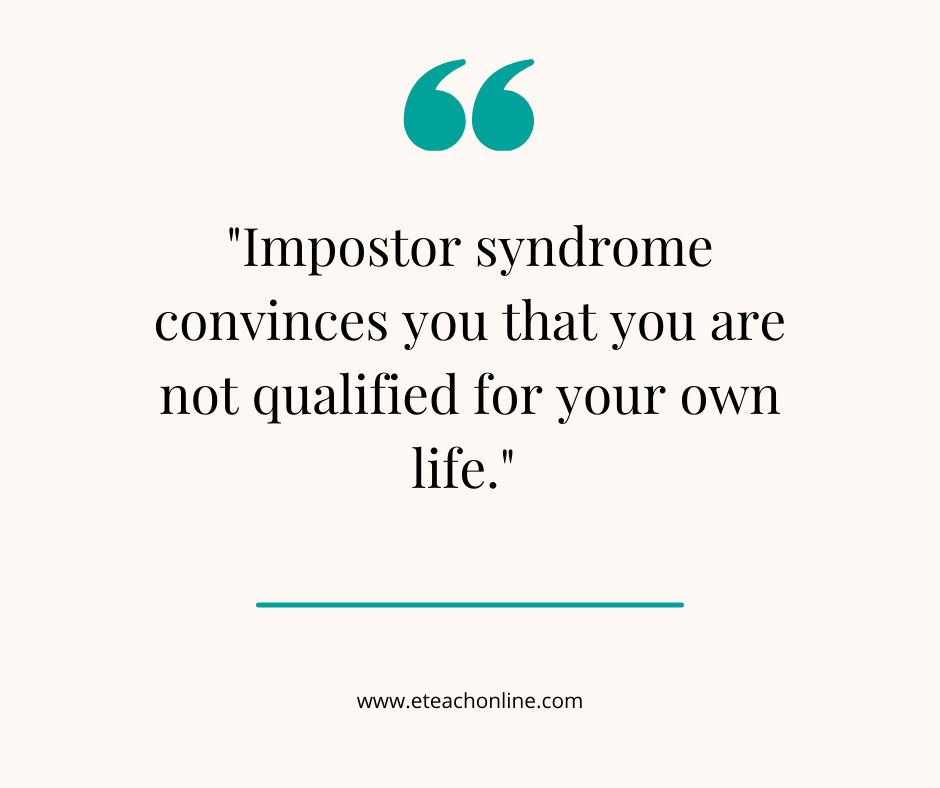Unlock the Episode: Listen and Download the Free MP3 from My Podcast Today!
SUMMARY
Imposter syndrome is a prevalent issue, particularly among beginners in various fields, including instructional design. This psychological phenomenon is characterized by persistent self-doubt and a fear of being exposed as a fraud despite achieving high levels of success. Individuals grappling with imposter syndrome often attribute their accomplishments to external factors like luck rather than recognizing their competence.
Imposter syndrome can undermine one's performance, career satisfaction and even lead to burnout. Transitioning from teaching to instructional design, one individual shared their personal experience of imposter syndrome during job interviews, highlighting the difficulty of discussing skills and achievements without feeling like an impostor.
Through a survey, it was revealed that imposter syndrome is widespread in the instructional design community. It manifests in various forms, such as struggling with technology, understanding industry jargon, and lacking confidence in content creation. This phenomenon is not limited to this field; even accomplished individuals like Albert Einstein and Maya Angelou have admitted to experiencing imposter syndrome.
To cope with imposter syndrome, seven effective steps were suggested:
- Talk About It. Share your feelings with others who understand, like a supportive community.
- Separate Feelings from Fact. Distinguish between your feelings of inadequacy and your actual competence.
- Reward Yourself for Starting Out. Acknowledge your progress and give yourself credit for taking the initiative to learn.
- Recognize Failure as an Opportunity. View setbacks as opportunities for growth and learning.
- Ask for Help. Allow yourself to seek guidance and assistance from others when needed.
- Visualize Success. Use visualization techniques to manifest your goals and boost confidence.
- Fake It Till You Make It. Act confidently even if you don't feel entirely prepared, as this can lead to actual success.
Understanding imposter syndrome and taking these steps can help individuals in the instructional design field and beyond overcome their self-doubt and achieve their career goals. Remember, you are not alone in experiencing imposter syndrome, and with support and self-awareness, you can conquer it and thrive in your chosen profession.
INSPIRATIONAL QUOTES







TRANSCRIPT
Hello, and welcome to the eLearning and Instructional Design for Beginners podcast, where new and aspiring instructional designers start, grow, and advance their careers in instructional design and online learning development. I'm your host, Crystal Harper. I'm a former school teacher who transitioned to instructional design, all while working full-time as a single mom. Would you like to become a successful instructional designer without the burden of earning another degree? Well, then let's get started.
All right, so now I'm going to talk about another huge issue that beginners in the field
often face. Do these thoughts sound familiar to you? I only got the job because I got lucky. I'm a fraud. Will they find out I don't know what I'm doing? If so, you may be dealing with imposter syndrome, and you are in good company.
I've been there. I get it. I understand. Imposter syndrome. This term describes how high-achieving people fail to recognize their success or accomplishments and have persistent self-doubt and fear of being exposed as a fraud.
They struggle with attributing their performance to their competence and often attribute success to luck or other outside factors. No matter what you call it, imposter syndrome is real and present in the instructional design world.
It's not a disease or abnormality, but can have a harmful impact on your performance and satisfaction in your career and eventually even cause burnout. So after deciding to make the transition from teacher to instructional designer, and as someone who is relatively new to the world of instructional design, I felt imposter syndrome quite often, especially when interviewing for a new job. It was difficult to talk about my skills and accomplishments in an interview without feeling like a complete fraud. With 10 years of experience in my education at the time, my confidence should have been higher, but years later after starting the e-learning and instructional design for beginners, I decided to find out how many others felt the same.
So I conducted a survey asking hundreds of e-learning and instructional design for beginners mastermind members and thousands of followers about their experience with imposter syndrome. The results proved that imposter syndrome is alive and running rampant in the instructional design world. Some of the things that I discovered is imposter syndrome with learning the tech such as storyline, captivate, Camtasia, Canva, etc. Imposter syndrome with understanding the jargon like the Addy model, SME, ISD, LMP, or LMS. Imposter syndrome with confidence in creating and designing content. Imposter syndrome when you see others succeed when you know you should be winning too.
So where does imposter syndrome come from? Elizabeth Cox in her TED-Ed Talk says that people who are highly skilled or accomplished tend to think that others are just as skilled, which can grow into a feeling that they don't deserve their success over others. Hence the presence of imposter syndrome. Elizabeth Cox also discusses the term pluralistic ignorance, which says that we doubt ourselves, but we feel like we are the only ones who feel that way. This mainly happens because no one else voices their doubt.
After viewing the results from my followers, it was clear that instructional designers generally feel a sense of imposter syndrome at some point in their career, especially in the beginning. In fact, imposter syndrome is seen in all walks of life and has been present for decades, if not centuries. Albert Einstein, Maya Angelou, and Meryl Streep are just a few well-known success stories that have been vocal about their experience of feeling like an imposter.
So you feel like an imposter? What's next? Join the e-learning and instructional design for beginners mastermind and talk about it with others who understand. Obviously, there are many other people who feel the same way, and it seems the best way to help combat these feelings is to share them. What is causing you to be feeling like an imposter? Because you're feeling alone. You don't have the guidance and support that you need. It's way easier to combat these hurdles with others who have been there and who are also mentoring you and by your side.
If you're just starting out as a new instructional designer, chances are you're feeling some kind of imposter syndrome. Beginning any new career is scary, and there's always a learning curve. But it can be especially nerve-wracking for those in creative fields where there's no real right answer to anything.
So now I'm going to talk with you about seven steps to coping with imposter syndrome so that you feel more confident in becoming successful in instructional design.
Number one, talk about it. People who experience imposter syndrome often think they're alone with the feeling. But once you open up to people who understand, who are also in your shoes just starting out in instructional design, you'll find that many more people experience it too. Make a post in the eLearning and Instructional Design for Beginners mentorship and support forums and allow other members to bolster your self-confidence. Then be available to do the same for them when they need it, because there will be times that they need it too.
Number two, separate feelings from fact. You may feel incompetent, but you are not unintelligent. You may feel inexperienced, but you do have the experience that every other beginner had starting out. Separate what you're feeling from what is fact and recognize that one often follows the other, and both can easily be confused, especially when we don't take the time to speak or think clearly.
Number three, reward yourself for starting out. Usually, perfectionism or the general drive to succeed is a good thing. Pat yourself on the back for taking the initiative to learn something new and change careers. That's a huge step. Forgive yourself when things don't turn out like you planned and reward yourself for trying in the first place. Take time to reflect on your major goals and recognize what you've already accomplished and reward yourself for a job well done.
Number four, recognize failure as an opportunity. Henry Ford once said, failure is only the opportunity to begin again more intelligently. Stop seeing failure as a setback and instead see it like a slingshot. You have to be pulled back as far as you can go before being propelled forward.
Number five, ask for help. If you've been living your life with a perfectionist mindset, like I should always know the answer or never ask for help, it's time to get rid of that type of thinking. Give yourself permission to be wrong, to have a break and to seek help from others. Instead of saying, oh no, I don't know how to do this. Try saying, I'm still new to this. I may not know the answer right now, but I will.
Number six, visualize success. Professional public speakers and athletes use this tactic all the time. Whatever the task, project or goal you're working towards, from succeeding in your current project to getting your first paid job, take a moment to close your eyes and really visualize what success will look and feel like. Then manifest that reality.
And number seven, fake it till you make it. This phrase gets repeated so often because it works. And most successful people have had to do this at one point or 100 points in their career. Don't wait until you're 100% confident or ready to take a risk and get serious about your career in instructional design, because that day will never come. The more you act like the instructional designer you want to become, the quicker you'll get there.
So that's all that I have for you today. Those are my seven steps to coping with imposter syndrome so that you feel more confident in becoming a successful instructional designer. Now you have a better understanding of what imposter syndrome is, what causes it, and the most common imposter syndrome battles that most instructional designers face.
Remember, you're not alone. Many of the best have felt feelings of imposter syndrome. So now it's time for you to go out there, follow those seven steps, and overcome imposter syndrome so that you can finally succeed in instructional design.
JOIN THE
eLearning and Instructional Design for Beginners Community
- In-depth courses & training
Access my rapidly growing library, attend monthly live training & accountability support groups
- Exclusive tools & members-only discounts
Tools, templates, downloads, checklists and more - plus receive special perks & discounts
- Supportive community & network
Feedback and support from fellow instructional designers, career-driven business owners, and experts who will keep you on track
Get Your Software Toolkit for Instructional Designers
Tools & processes that will help you plan, build, and grow your instructional design career and freelance business.





